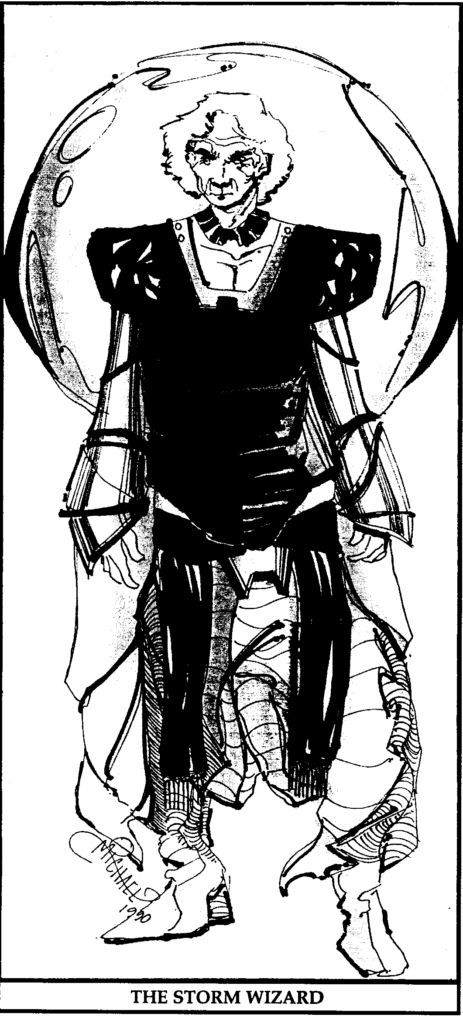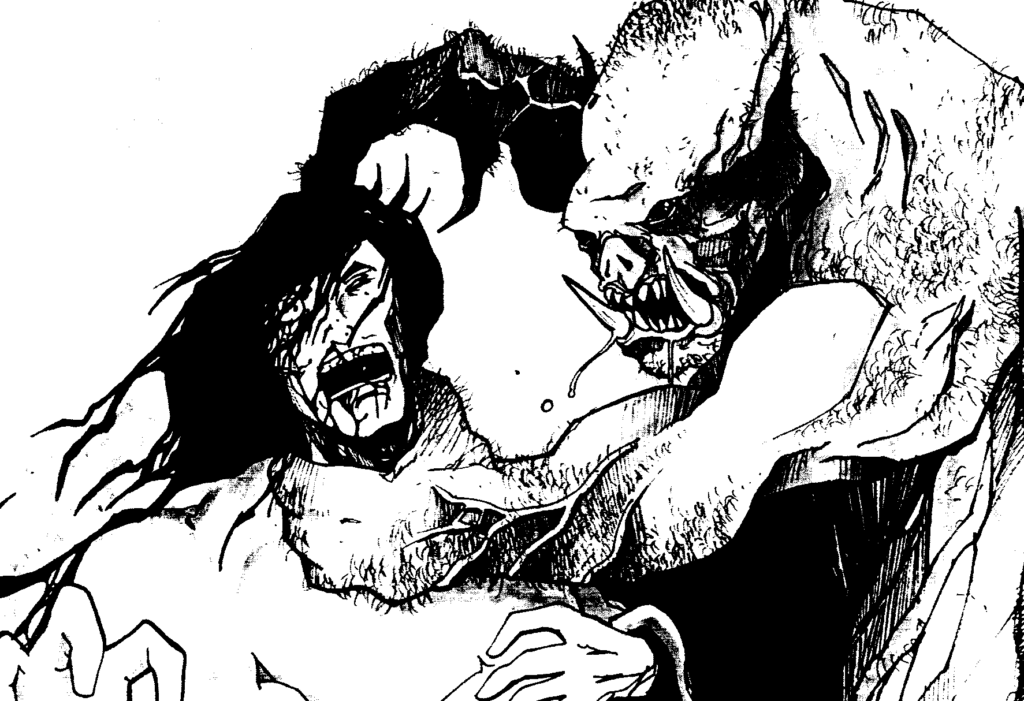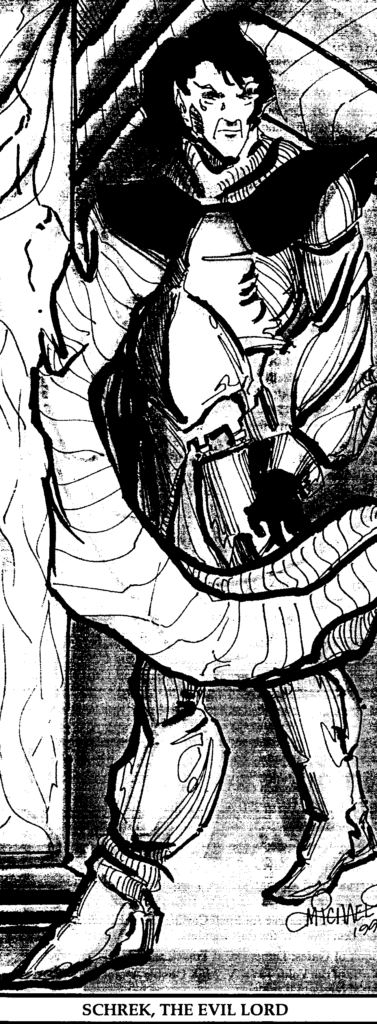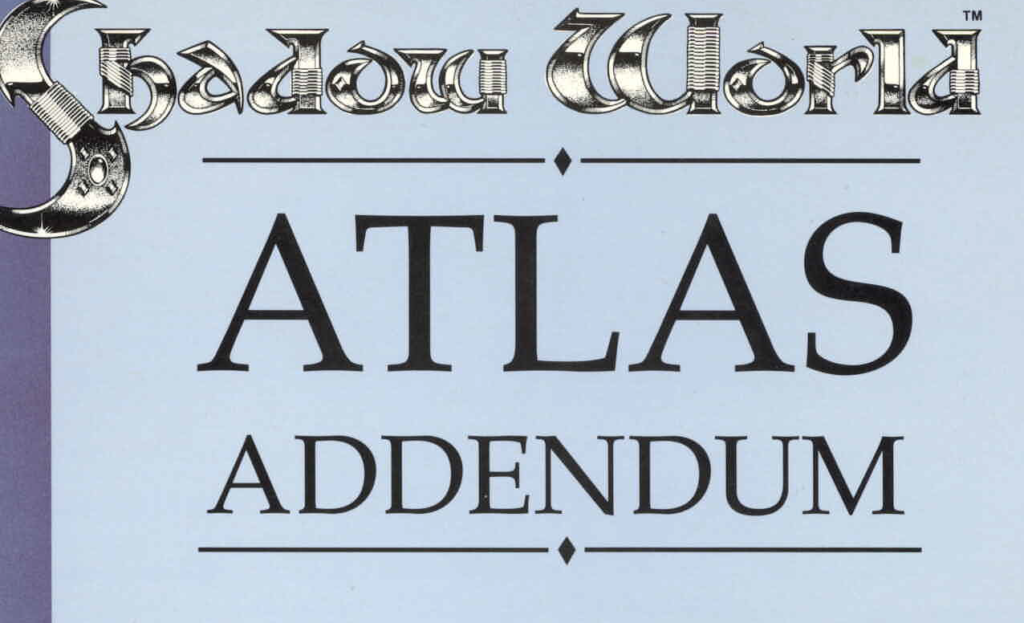
If you are like me (mid 50’s) and have been playing Rolemaster and using Shadow World since it’s release in the late 80’s, the publication of the Emer box supplement was a huge step forward for the Kulthea world setting. By 1990, there were over a dozen Shadow World products, but until Emer, only 2 were written by Terry: Shadow World Master Atlas and Jaiman: Land of Twilight. The other 10-12 products were by third party authors. While all of them have their strengths as game supplements, they were generic adventures that were shoe horned into the game setting and did relatively little to expand world building.
Before I dive into my thoughts on Emer, let’s quickly review where “Canon” was in 1990 and the two Terry products mentioned above. For the most part, the Shadow World Master Atlas (SWMA) was fairly generic, establishing a few SW tropes: Navigators, Loremasters and Dragonlords but mostly was meant to connect Rolemaster to a useable setting. These elements were kernels of ideas from the Loremaster module series and expanded and built off of that early material. The Flora and Fauna book was mostly generic creatures straight from Creatures and Treasures and covered all the basics from standard D&D. The timeline was only 2 or so pages and didn’t add any depth that the later Emer regionals provided.
If the SWMA set the table for the setting, Jaiman was the meal. Clearly not a regional book as it was titled, it nonetheless brought a specific tone and style to the setting. A lengthy adventure tied various elements together and promised a larger world (The Grand Campaign took this further), cool “dungeon” style tombs embraced Terry’s architectural background and fused high tech elements in a fantasy setting. It was light medieval fantasy but there was a hint of darker things: Evil Gods, Unlife and enigmatic Lords.
In my opinion, Emer brought a whole new vibe to Shadow World: more mature, more grimdark and more malevolence. One aspect that contributed to the look and feel of Emer was the artwork. You can’t talk about the Emer box set without referencing the incredible box art done by Les Edwards. I suspect that art launched hundreds of adventures and sold many on the Shadow World setting. Prior to his death, Terry even planned on carving the City of the Dead out of the Emer IV supplement to give it it’s due. For more Les Edwards art; interestingly, he did the cover art for the fighting fantasy books by Ian Livingstone who IIRC did one of the Shadow World fantasy fiction books?
Besides the box cover, the interior art was different than that found in SWMA and Jaiman. This piece appears to be done by Michael Alexander Hernandez. It feels modern, perhaps even futuristic but foreboding. It certainly lent a different tone to the setting from previous books.

This piece doesn’t seem to have an artist signature, but it’s in the same style. While B/W, it appears to have a Lugrok tearing into the victims skull…is that rivulets of blood on his face?

History of Emer
The timeline and history of Emer introduced several powerful factions: the Jerak Ahrenrath, the Eight Orders and the Masters of Emer. In further work, the Masters have sort of disappeared, but the Jerak Ahrenrath and the Eight Orders become integral to the wider plots of Emer and the future of Kulthea itself. For me this is entirely new material that expands the Canon; none of this material was seeded in the earlier Loremaster series nor hinted at in the SWMA, so it was a delight to read and shifted my view of the setting–for the better.
Flora & Fauna
Again, Emer added to canon with some new plants and creatures. As I have argued, SW needs more of this and less Terran standard critters and plants to help in game immersion. One of my favorite (if you’ve read Priest King you’ll know this):

It’s important to note, that many of the Canon SW books introduce new flora and fauna, but these weren’t all included in future Atlas’s. For instance, the Shalish, Frask or Boerk were never included in SWMA 3 or 4. I believe I compiled a full list of plants/creatures from all of the core books to be included, but I think it’s a failing that they weren’t included in MA’s.
Races
With a new canvas to paint and a huge land area to fill in, Terry was able to expand on the races found in Shadow World. Of note are the Kuluku. Most of the new Emer races seemed to finalize the racial types found in all later books.
Geography
Part V of the main book covers the various regions which, like the rest of Kulthea are wide ranging in styles, cultures, topography and climate. The Essence Flows are given less credit for this phenomena, and I think that the later de-emphasizing of the Flows as Barriers was a lost opportunity to reinforce a key element of the setting.
This section is further expanded in the later Emer regional books and all, if not almost all of it, is found in those later books. (except for the pending and final quadrant Emer IV)
For me a few takeaways:
Kaitaine really needs it own supplement. From the glassed roof grand marketplace to the Palace of the Bankers.
Krylites are very cool and make a better foe than Orcs.
Part XI (slight spoilers)
I recall reading Emer for the first time and it was this section that really shifted by view of Shadow World. The Jerak Ahrenreth, the “Secret Circle” and it’s history became a more compelling plotline than some abstract Dark God or Evil NPC Magician. A dense world spanning history tied the past with the present made this evil and twisted cult the long term antagonist(s) for my Shadow World campaign. Much of the material seemed familiar and is reminiscent of the Court of Ardor (but that’s ok, cuz that was cool too)

The Circle of 8, the Adherents and the cool citadel layouts are Terry at the top of his game.

ATLAS ADDENDUM
The second book included in the Emer Box Set is the Atlas Addendum and this is where all the new material and cool stuff can be found.
Part I is a grab bag of topics and delves into world awareness, the nature of “good” vs “evil”, more details on other planes, and even advice on modifying Navigator charges.
Part II is the extended timeline, specific for Emer and greatly expanded in later books.
Part IX Places of Power includes a number of magical, mysterious and relevant places in SW. Most can be moved around and used anywhere. My f
Part VIII and Part X: Other Powers & Goodies
But the Jerak Ahrenreth wasn’t the only power introduced in Emer. Terry introduced is to the Eight Orders of the old Emerian Empire, let by Aldaron (a nod to Star Wars?). There is great material here, either as foils for the group or as possible back grounds for the players. And there are Yarkbalkas! We also learn about the Storm Wizard, who is retconned in later work and his 4 mysterious Storm Heralds.
The Dark Gods

Perhaps the biggest addition to Other Powers is the inclusion of the Charon pantheon, the Dark Gods. Of course this is a major expansion to the setting and impacts the metaphysics of the game, channeling and future SW products.
Artifacts & Lost Technology
Often time we buy and read supplements for the “goodies” and not necessarily to use in gaming. NPC stats, fortress layouts and cool magic items. The Emer box set delivers in spades with a good list of artifacts and notable items. I believe that most of these were never incorporated into later Master Atlas’s, so the Emer Box set is the only source for this material. Notable items include (finally…) the Ilarsiri, the Starsphere, the Leafblade, a number of books which I missed in my previous blog, powerful staves, and a slew of Lords of Essence items. Also included is the Lense of Strok, which was my McGuffin for my high level adventure series: Legends of Shadow World.
Other bits. Terry also threw is a more comprehensive look at magical materials, some Warding and a few other Spell lists and pretty good Encounter Table that I used for my version.
So why is Emer Box set worth a look?
- It appears that only Emer III is currently available on DrivethruRPG. The Emer book will provide an overview over the whole continent–including Emer I & II and the pending Emer IV.
- While the material was included and expanded on in Emer I-III, it was a better template than that used in Jaiman. (Assuming Xa’ar is Jaimain: NW; Wuliris is Jaiman NE; Tanara is Jaiman SE and Haalkitaine is Jaiman SW). A broad overview of a continent with smaller regional supplements seems a better format.
- The addendum was the precursor to the desired “Artifacts and Technology” supplement that Terry always hinted at. There is cool stuff in this supplement.
- It leaned further into the fusion of scifi and fantasy.
- It established a globe spanning danger that could anchor any long term campaign.
- Combined, the SWMA and the Emer Atlas basically “fixed” core canon material. Besides some smaller regional powers, some expansion on the Jinteni and some discarded ideas (like Jewel Wells) the framework is all there for future work.
Like many SW products, the Emer Box Set will never be reprinted. Perhaps the Addendum could be republished as a PDF? Or even better, a Master Compendium could be collated from all of this disparate material.
Ultimately, the Emer Box Set was the maturation of Shadow World as a setting, laying the groundwork for all subsequent material.

Wow this was a very thorough blog about Emer! Nice to see it all in one place. I agree Emer feels more like a “real place” than other areas of Kulthea (even Jaiman). The history is much more intricate and interesting … and there is some crazy wild stuff that goes on for almost no reason (i.e. much of it gets resolved thousands of years in the past)! I really like the Orders and how they devolved into very different things over time. I do wish Emer IV could have been published. I’m presently playing an Itanis Warlock which is cool, but I had to do some homebrew on missing facts since it wasn’t available. I generated my own family tree and naming convention for the people, etc. It was fun writing up the background.